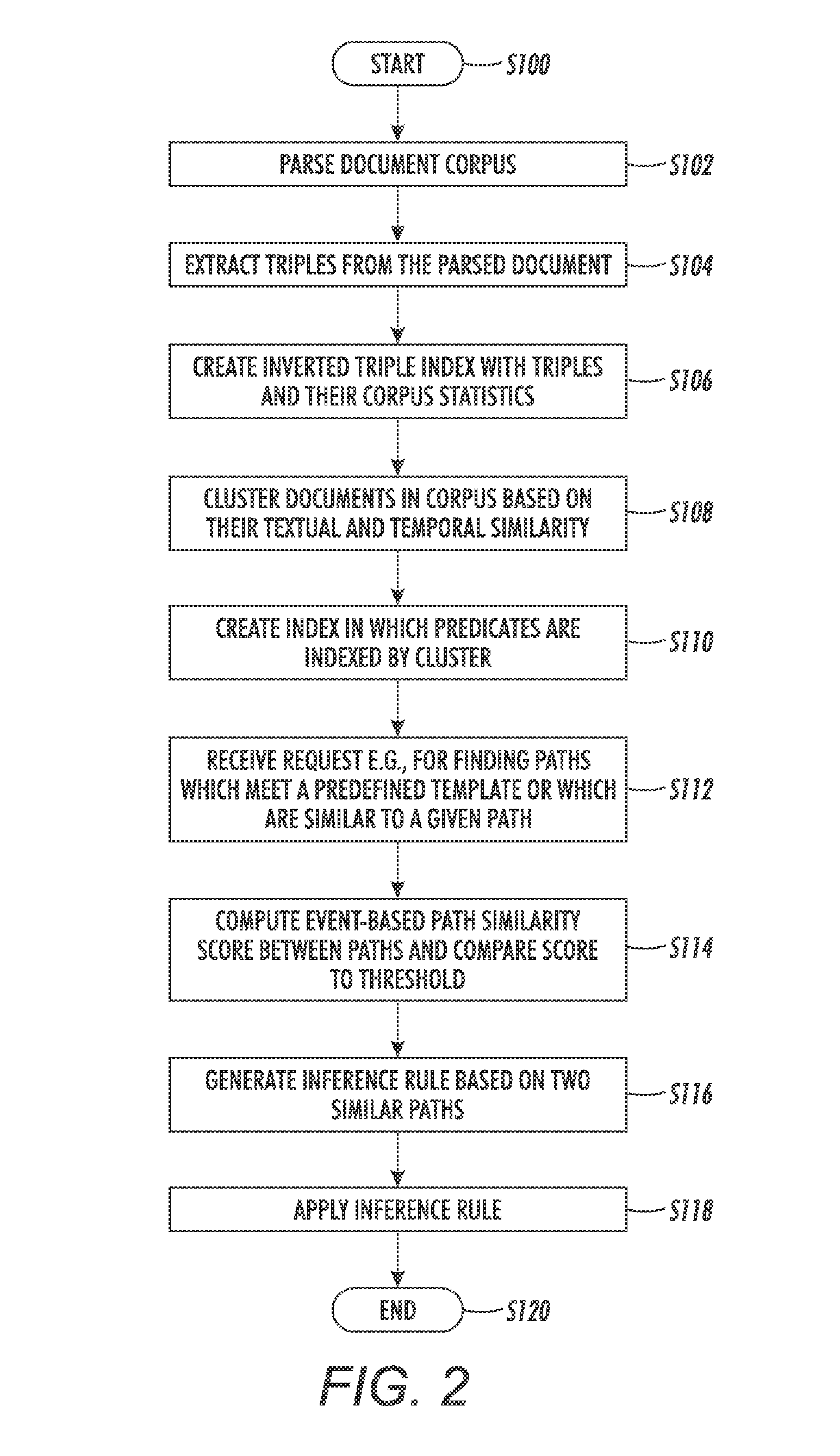Refining inference rules with temporal event clustering
- Summary
- Abstract
- Description
- Claims
- Application Information
AI Technical Summary
Benefits of technology
Problems solved by technology
Method used
Image
Examples
example
[0114]In this example, inference rules using predicates identified based on their similarity scores are used in a document clustering task.
[0115]There are several ways to assess the quality of a repository of inference rules. One is to manually assess their correctness (as defined by some criteria) and show the percentage of correct vs. incorrect rules. This method, sometimes known as “rule-based” evaluation, suffers from two main problems. First, it requires manual effort, and second, it does not assess the actual utility of the repository, as the repository may contain, for instance, many correct rules that are never used. A different approach is called “instance-based”, where the practical utility of the resource is evaluated, e.g., according to its contribution to some natural language processing (NLP) task. This is the approach followed in these examples. Since no ground truth exists to measure the quality of the edi score in comparison to the dirt score, document clustering is...
PUM
 Login to View More
Login to View More Abstract
Description
Claims
Application Information
 Login to View More
Login to View More - R&D
- Intellectual Property
- Life Sciences
- Materials
- Tech Scout
- Unparalleled Data Quality
- Higher Quality Content
- 60% Fewer Hallucinations
Browse by: Latest US Patents, China's latest patents, Technical Efficacy Thesaurus, Application Domain, Technology Topic, Popular Technical Reports.
© 2025 PatSnap. All rights reserved.Legal|Privacy policy|Modern Slavery Act Transparency Statement|Sitemap|About US| Contact US: help@patsnap.com



